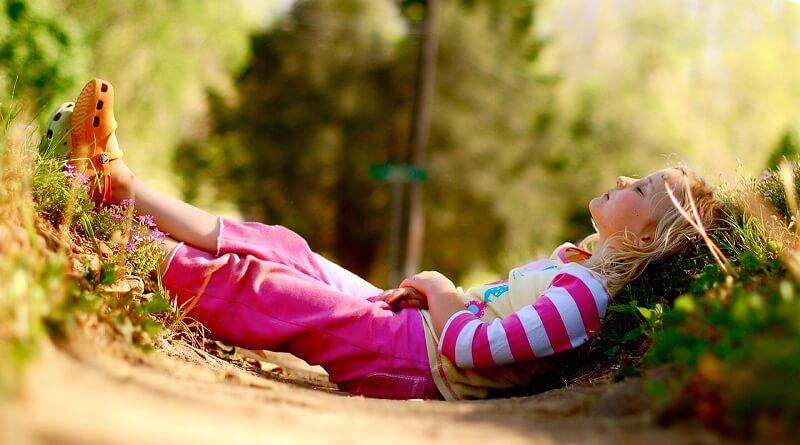Physical Development – Motor Muscles:
-Create spaces and games for him to run, climb, jump and swing indoors and outdoors. Jump together on the bed; have fun. (Of course, taking the necessary precautions to avoid falling)
-Do walking and running exercises on floors of different hardness. Put soft and hard cushions in the living room; some low and some overlapping; Encourage him to walk over obstacles. (Exercises on different surfaces such as sand, grass, etc. will also be beneficial.)
-Climb the stairs and come down.
-Get a trampoline if possible. (Then he can use it for the rest of his life!)
-Encourage the toilet.
-Involve him in the housework, little by little. Especially with a spoon, work on transferring from container to container. (You can put lentils, hazelnuts, muesli, etc. in the bowl.) Then you can start the transfer work with liquids. (You can find very good examples of these issues in our home Montessori seminars)
-Baby dressing, feeding, etc. together. do the activities. First, show your child how to do it; Then give him time to do it himself.
-Play dough games. Crushing, kneading, etc. dough of different hardnesses with his fingers. Encourage him for activities. Perform cutting activities with plastic dough scissors.
-Opening boxes, attaching clothespins, placing shapes, etc. concentrate on games and activities that will develop fine motor muscles.
Social Development:
-Strive to be a good example and role model.
-Create opportunities for your children to express themselves. Instead, don’t try to do or talk or try to understand him without hearing what he is saying. Let -him make an effort to explain himself to you and live this pleasure to the fullest when he can.
-Do daily activities together; share what you are doing. (Make him feel that you are approaching and caring as an individual!)
-May be with other children; Create spaces where he can step into socializing. Family outings, parks, playgroups etc. (remember, parallel game starts before 2 years old; they don’t play together yet but they watch and tallit each other; later they will start playing and sharing together too)
Emotional Development:
-Dressing, playing etc. Offer your child 2-3 options. Let him choose for himself and have the satisfaction of doing what he wants. Respect their choices.
-Avoid unnecessary reward and always punishment. Be sensitive, appreciate and encourage.
-Choose toys and activities that are age-appropriate and contribute to your child’s development.
-Design your child’s room in such a way that he or she can use it comfortably. (Don’t forget to read our previous articles on this subject!) As he can do more things on his own, his self-confidence will increase and he will take fast steps towards becoming a happier child.
rather than “don’t touch it, don’t go there, etc” restrictions; Furnish your home as child-friendly as possible and encourage free movement by creating a safe environment.
Language development:
-Give her time and encouragement to talk and express herself. Do not immediately understand when he points; let him try to tell you.
-Talk to him a lot (gracefully, slowly and clearly).
-Look at the books together. First only subject-verb; then read or explain in more complex sentences. Promise her to tell her during breaks, ask questions, and wait patiently.
-When playing, traveling, doing housework, etc. Explain what you do in each situation in short sentences and clearly.
-Do line work with slightly chubby pencils (or special pencils that allow you to hold the pencil correctly).
-Sing songs and simple rhymes.
Sensory and Mental Development:
-Do not keep activities long. Offer a few games/activities he would like to do; let him choose and do what he wants.
-Do activities that will develop his different senses and introduce him to as many stimuli as possible. For example, different tastes, different smells, different sounds. (You can make magic bags and discover what’s inside them; you can hunt for different shapes in the garden, you can try different flavors together.)
-Play games with materials with different textures. (For example, matching pieces of fabric of different textures.)
-Play games with colors. Classify, match, etc. Start with the primary colors (red, blue, yellow) first, then continue with the intermediate colors.
-Play games with flashcards (word cards). Like what it is, matches, classifications and rankings. Start with the very simple ones first; You can diversify as you get older.
-Body parts, family, vehicles, household, etc. play games on different topics, paint pictures, make picture albums and talk about them, etc. (Of course, he won’t be able to paint at first, but okay; first they start with scratches on the paper; then they start painting within the borders; then they become more and more masterful. The important thing is that we give them a chance!)
-Play with little puzzles. The toys you choose should support hand-eye coordination, fine motor muscles and mental development as much as possible.
